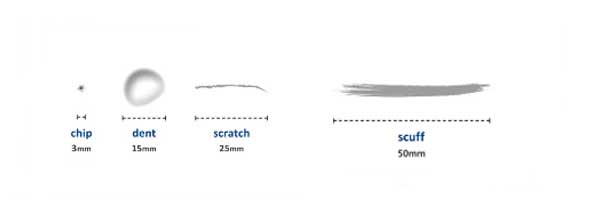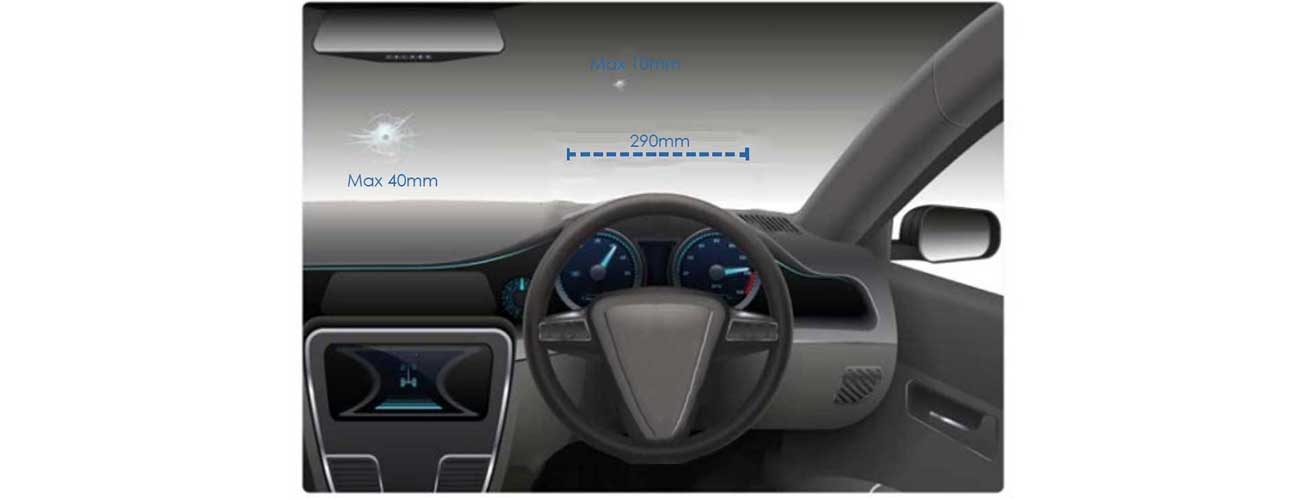If you have lease vehicles in your fleet, then there will come a time when these vans and cars need to be returned to the funder and when that happens the condition of the vehicle will be inspected and a report produced by the funder. As part of this report they will note anything that exceeds the fair wear and tear guidelines and your company will be charged for this damage or the repair work needed because of it.
What Are the Fair Wear and Tear Guidelines?
Fair wear and tear is a phrase used to describe the expected wear to a vehicle based on regular use and a reasonable level of care from the driver and passengers during the time the vehicle is leased.
The industry-accepted guidelines are set by the British Vehicle Rental and Leasing Association (BVRLA) and so you will find the guidelines will be pretty uniform no matter who the funder is as they all agree to these guidelines.
In the following two sections, what’s covered and what’s not covered we will be referring to the car wear and tear guidelines. There are slightly different guidelines for vans in your fleet and we can provide further information on these for you but to avoid confusion and because the majority of fleets are made up of cars we will focus on them in this guide.
What is the BVRLA?
The British Vehicle Rental and Leasing Association is an organisation that represent over 1,000 companies in the vehicle rental, leasing and fleet management sector that manage a combined fleet of over four million vehicles on UK roads.
We work with our members to represent their interests in discussions with policymakers, public sector agencies, regulators and other key stakeholders, to ensure road transport delivers environmental, social and economic benefits for everyone. We also work with these groups to make sure that our members have a full understanding of their legislation, and we ensure they comply with these regulations and promote high standards of professionalism, fairness and customer service across the industry.
What’s Covered by Fair Wear and Tear Guidelines?
Under the guidelines you will not be penalised for any of the below:
Surface scratches that are under 25mm to the paintwork that do not show the primer or bare metal and can be polished out. There is a maximum of four scratches per panel.
Scratches that are under 25mm on unpainted areas are also allowed provided the moulding or trim is not broken, cracked or deformed.
Chips in the paintwork that are 3mm or less in diameter and have not rusted to a maximum of four chips on a single panel, six chips on a door edge, and eight chips on a forward-facing panel. Anything exceeding this will be classed as excessive wear and there may be charges.
Dents that are 15mm or less in diameter where the paint surface has not broken with a maximum of two per panel. Dents that have a chip within them or are on the roof or swage line of any panel are not classed as fair wear and tear.

Light scratching on the windows is allowed provided it does not interfere with the driver’s line of sight, any heating elements to the front / rear window or any driver assistance systems.
Please note this is not an exhaustive list of what would be covered but some of the most common wear that your cars will encounter.
How are Cars Checked for Fair Wear and Tear?
Lease providers will inspect the vehicle at the collection address prior to it being collected, or as part of the collection process. This means that there is no risk of any damage being picked up on the car's drive to the funder and being recharged to your business.
The inspection will involve a detailed check of the car's condition and the inspection agent will complete a detailed report that the driver, or the representative handing over the vehicle, will be able to add any comments to and sign to confirm the report. Following this, the vehicle report will be reviewed by the funder and if there is any excessive wear and tear they will raise an invoice to you for damage recharge.
What Is Unacceptable Wear and Tear?
The BVRLA guidelines also establish what isn’t covered by them which includes:
- Any missed service
- Any service you are unable to prove has been completed (missing paperwork)
- Any repairs required due to an active warning light
- Rust and corrosion to bodywork, trim and alloys
- Any signage, livery or badges remaining on the vehicle
- Any damage caused by adding and removing signage, livery or badges to the vehicle or any discrepancy they cause to the paint colour
- Excessive external dirt, including bird lime, tree sap, and road debris
- Rubbish left inside the vehicle
- Missing keys
- Rips and tears to a convertible roof
- Chips and cracks to a panoramic roof
- Non-working tow bar
- Broken windscreen wipers
- Low washer, oil, coolant or brake fluids
- Damaged or missing wingmirrors
- Any broken bulbs
- Tyres that are below the legal tread limit, low pressure or are damaged
- Damage to wheel spokes, fascia, or alloy hubs
- Grooved brake discs or drums
- Seized or damaged engine due to insufficient fluids or other vehicle damage
- Any tears, rips or stains to interior
- Damage to interior fittings such as door compartments, seatbelts, rear view mirror, sun visors
- Damage caused by accessories such as phone equipment being fitted and removed
- Any damage to the windscreen over 10mm in the driver’s line of sight or over 40mm on the rest of the windscreen

How to Avoid Additional Charges
There are a few circumstances where you might be charged at the end of a lease agreement and these include if the mileage exceeds the mileage allowance, if you are ending the agreement early, if there is any damage to the vehicle and if there is any wear that exceeds the fair wear and tear guidelines.
To avoid being charged for any excessive wear and tear we advise you are aware of the guidelines and make sure these are compatible with your vehicle needs before you take out a lease agreement.
You should also make sure your drivers are aware of the guidelines at three points:
1. Prior to agreeing to take the vehicle
2. A month or so before collection so the vehicle can be inspected and anything exceeding the guidelines can be flagged and repaired
3. Just before inspection and collection so that they are aware of what would be considered fair wear and tear on the collection report
This will help them be aware of the condition they need to keep the car in and make sure they know that if there is any excessive wear, they can flag this with the fleet management team for repairs if needed.
Where to Find the Fair Wear and Tear Guidelines
You will be able to request the fair wear and tear guidelines from your funder at any point during your contract.
Alternatively, you can find a link to the main funder guidelines below:
- ALD fair wear and tear guide
- Alphabet fair wear and tear guide
- Arval fair wear and tear guide
- Hitachi fair wear and tear guide
- LeasePlan fair wear and tear guide
- Leasys fair wear and tear guide
- Lex fair wear and tear guide
If your vehicle is managed by Wessex Fleet, then we can also request these guidelines for you at any point so that you can have a copy on file to refer to at any time.
For more of our leasing guides head back to this section or take a look at all our guide content here.
